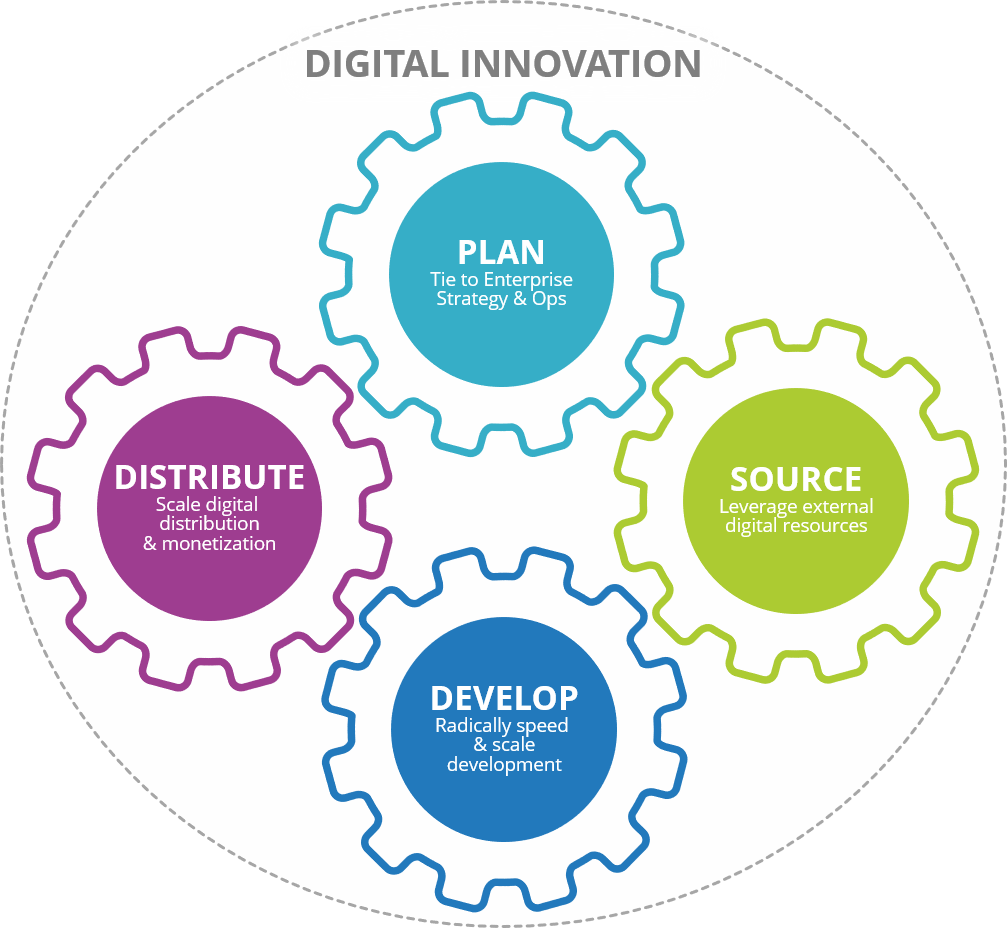With a rapidly growing digital economy, today’s CEOs and business leaders are currently in the middle of a seismic shift in the way businesses view and use their business technology. While companies will still consume software from technology vendors, the need to produce their own software will become increasingly essential to the success of their business.
IDC predicts that within the next 3-5 years, every enterprise – regardless of industry – will shift into a “digital innovation factory”. The shift entails continuing to consume business critical software such as CRM, finance, HCM, procurement and other enterprise applications but to also produce software to meet growing customer needs, expectations and experiences.
The Future of Digital Innovation
New technology, developed in-house, will be embedded into the organization’s own products and services, to compete within their own industries. The main focus will be on creating new value for their own customers with digitally enhanced product offerings and services. In addition, new technology will also be developed in-house to support operations internally and fulfilling the move from a manual long tail business process to a digital one, enhancing the organization’s operations and profitability. The digitally innovative enterprise has arrived and is working towards a digitally enhanced experience both for its customers and itself.
By 2023, IDC predicts enterprises’ ability to rapidly develop their own digital innovations will be a core competitive requirement, as more than half of the world-wide economy will be digitally driven. Many enterprises are already on the journey to become prolific software producers, creating and distributing digital products and services with digital-native speed and scale.
It’s no longer acceptable to just consume software, you must be producing it as well. But production is not easy and requires a framework, guidance, resources and pathways to not only help plan, source and develop it but also to distribute it as a revenue generator.
This transition to a ‘new normal’ requires a strong and carefully thought out strategy and execution plan, along with strong skills and substantial agility in the IT department. Enterprises need guidance throughout this period of transition with a solid methodology that encourages digital innovation. IDC’s extensive research on the digital economy has led to the creation of methodology called the Digital Innovation Supply Chain (DISC).

The DISC methodology enables a very high level of business transformation digitally. When organizations understand they can fully change their operating model, creating more customer value and optimize for success, it completely shifts the strategy and dynamics of an organization’s business plan and future vision. This change can be daunting, but it can also pave the way for a future of success for an organization in the digital economy.
Through planning, developing, sourcing and distributing proprietary software, this framework helps companies become industry leaders within the new digital economy.
How Do You Become a Digital Innovation Factory?
For companies that have traditionally been tech buyers, IDC offers some advice in becoming comfortable with this inevitable shift:
- Embrace the growing requirement to create a “digital innovation factory” capability within your own organization – your organization’s competitive advantage and future viability are depending on it.
- Don’t reinvent the wheel. Look to existing peer examples of the many models and pathways for creating your own digital innovation supply chain. From planning to developers to sourcing pathways to distribution, there are a multitude of avenues for success. There is also an abundance of research and advice to help you with the right strategy and execution.
- Invest in your software development skills. This is a requirement that will mandate executive sponsorship (potentially all the way up to the board) and will require heavy investment. Expanding your development team may require the company to rethink existing policies including how and where developers are hired, and how they are grown and groomed internally. Failure to invest here may, long term, be a death sentence for many organizations.
- Move with urgency. By 2023, over half your competitors – the most capable ones – will be setting the competitive standards for product/service functionality, customer experiences, pace of innovation and scale of distribution.
In order to remain competitive, your organization will require strong internal digital innovation capabilities, built around the new planning, sourcing, development and distribution models and processes. This will be the “new normal” in the increasingly digitized economy.
Learn more about IDC’s Future of Digital Innovation Research and the importance of software in IDC’s research perspective, “The Future of Digital Innovation: Every Enterprise Must Become a High-Performance Software Producer”:




